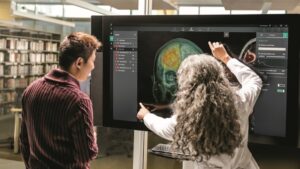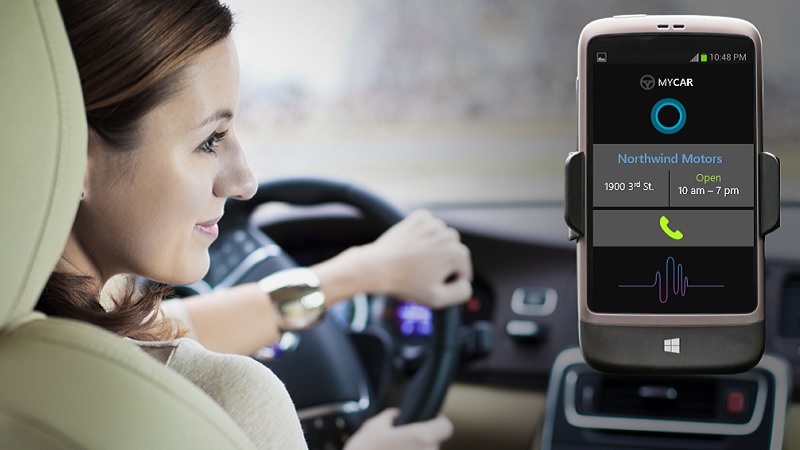
Tips for creating a digitally transformed customer journey for automotive manufacturers
The automotive industry is subject to the conflicting forces of constantly evolving and heterogeneous customer requirements, increasing government regulations and ever shorter technology innovation cycles. Given that a very strong degree of customer loyalty to a particular manufacturer is more evident in the automotive market than in the market for most other goods, the customer journey has particular significance in this sector.

The current developments in digital technologies are changing customer behaviour and expectations in terms of interactions with manufacturers and dealers. While other sectors, such as hotels and tourism, online shipping and even in-store food retail are experiencing major upheavals as a result of disruptive retail formats, the automotive industry can no longer afford to continue rigidly aligning the customer experience with the same principles and approaches applied over the last number of decades.
What makes today’s customers tick?
When purchasing a vehicle, customers expect digitally supported sales and aftersales processes and a customer journey in which online and physical touchpoints are comprehensively integrated. One unique feature of the automotive industry is that many important aspects of on-premise car dealerships simply cannot be digitised. According to the Global Automotive Consumer Study by Deloitte from 2018, nine out of ten car buyers still prefer to visit a showroom for a hands-on experience of their desired vehicle. In addition, a full 70 percent of buyers state that the personal support provided by a salesperson is important, while two-thirds want to negotiate in person to get the best deal. Clearly, the role of the salesperson is not in danger of becoming obsolete. At the same time, manufacturers need to explore new avenues to optimise placement of their products and services and enhance their competitive position.
In fact, the boundaries between customer, dealer and manufacturer are become more blurred all the time. Consumers used mixed-reality technologies to configure their dream car while sitting on their sofas at the weekend. The Internet provides a wealth of information, material and functions and is becoming a global marketplace where everyone can create the exact car that meets their needs and fits with their lifestyle. The Configure-to-Order principle is practically just one mouse click away. Similarly, the scheduling of an appointment in a showroom, the booking of add-on assistance services, online consultations with experts, researching experiences, tips and reviews – all of this can be done using mobile and digital technology. In addition, the experience in the physical dealership should be dovetailed seamlessly – from test drives, through the design of additional personalised options to signing of the contract.
Omnichannel – often requested, rarely realised
To offer coherent, personalised experiences, automotive manufacturers and deals must be able to provide customers and prospects with constant support along the entire lifecycle – from selection, through purchase and leasing or financing, right the way through to servicing. After all, in the current Age of the Customer, such important differentiation cannot remain on the level of products and must also extend to the brand image and services along the entire customer journey.
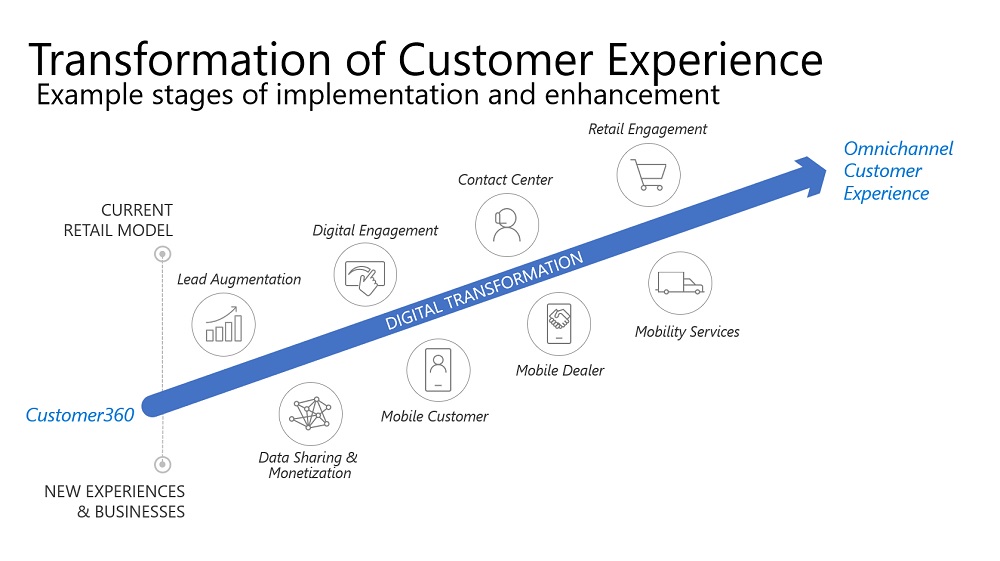
The tool of choice is a sustainable omnichannel strategy that unites all touchpoints, continually aggregates essential insights and is capable of making these available to those involved in approaching and supporting customers. Most manufacturers have a lot of catching up to do in terms of implementing the tools and systems required to make this possible.
The famous 360-degree view of the customer – and its pitfalls
To implement omnichannel in a truly consistent way, there is one prerequisite that must be fulfilled – direct access to comprehensive data and insights on customers, their requirements and their desires, as well as about previous contact with them, about any past issues that may have arisen and about any upcoming “compelling events”, such as the expiration of a leasing contract or the next service interval.
Experience shows, however, that achieving this 360-degree view of a customer is no easy task – for several reasons:
- Data cannot be entered, saved and evaluated continuously and in real time due to a lack of system integration.
- Data protection issues and compliance problems, in particular due to strict regulations such as GDPR, present obstacles to achieving the goal of a holistically usable database.
- Most standalone solutions available cannot keep pace with the growing volume of data about prospects and buyers and do not support a connection to modern data sources, such as social networks, or to advanced analytics tools.
When it becomes essential to introduce a new, integrated system, companies then face challenges such as lengthy integration projects, the expense of training end users and intensive change management.
Integrated customer experience solutions for the automotive industry
Microsoft offers a way out of this dilemma with its technology portfolio, enhanced by customer experience tools from Adobe. Seamless interaction enables a combination of solutions based on the modular concept. For example, technology projects can be divided into smaller sub-steps and users benefit directly from a trusted and easy-to-use interface that provides users with the tools they need every day in a clear and straightforward way, based on their individual roles.
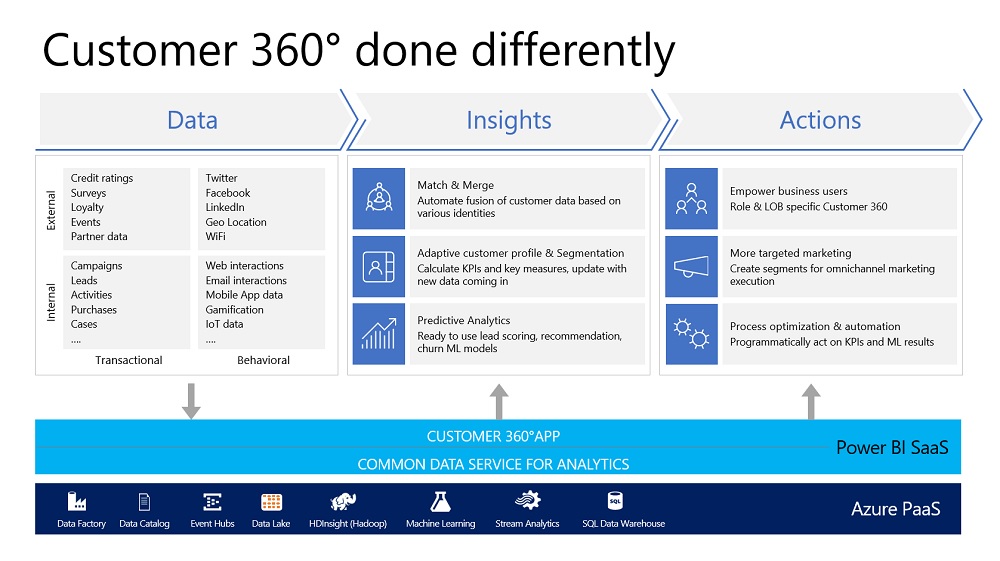
This practical approach reduces complexity and simultaneously creates an agile, dynamic environment for a genuine 360-degree view of the customer, which in turn provides optimal support for users and decision-makers throughout the company.
The digitally transformed customer journey
Digital transformation of the customer journey is a topic that can no longer be ignored by manufacturers and dealers. There is great potential here for improving the targeting of customers and prospects, offering professional services along the entire lifecycle and increasing customer loyalty to your brand.
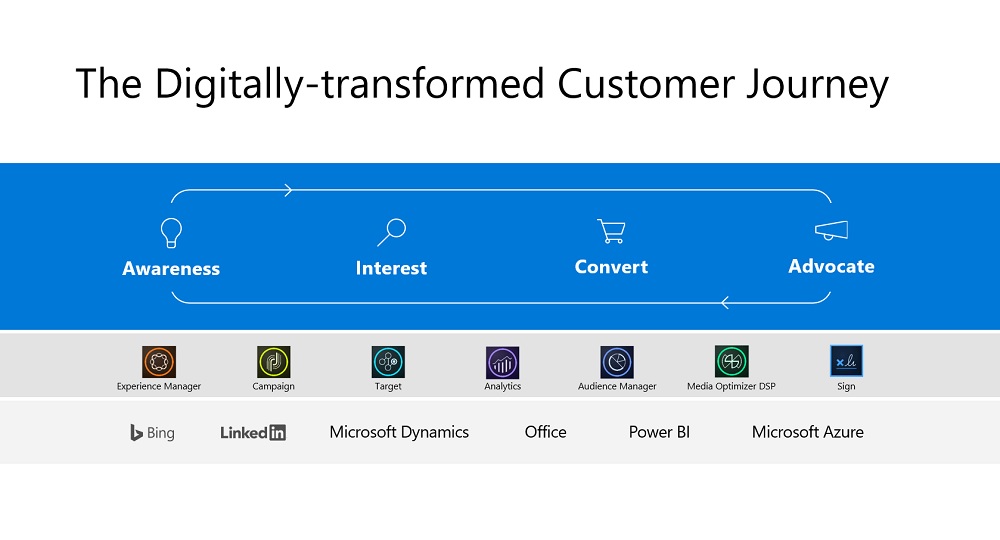
Our recommendations:
- Use targeted messages to approach potential customers while they are still at the stage of researching information online and use your business system to record the information and features used by prospects in their searches.
- Extend the range of potential data points on our customers and prospects by entering into strategic partnerships with providers of mobile devices, using interfaces with social networks and building local service networks. In this way, you can track the mobility behaviour of customers more effectively and develop tailor-made offerings.
- Use your online presence to do more than provide comprehensive product and pricing information – you should also provide explanations of related services like financing and assistance offers. Ensure that the relevant queries are stored centrally in the customer data record, so that they can be accessed directly later by the dealer’s employees.
- Remember that, today, customer interactions can occur almost anywhere. Meet your customers where they are and offer them the tools they want – including mixed-reality configuration programs.
Carefully considered investment in modern technology is essential to driving the digital transformation of the customer journey. Get your priorities straight and decide the areas in which the greatest benefits will be achieved in the short, medium and long term.
Microsoft is a change agent for the automotive industry and helps companies find ways to leverage immense opportunities with new and innovative solutions. Find out more about specific application scenarios and contact our industry experts!
Mixed reality is no longer just a technology of the future! Learn in our e-book “Mixed Reality: Why nine out of ten businesses plan to use it”, how companies around the world use mixed reality to increase their efficiency, improve customer satisfaction and achieve their corporate goals.

